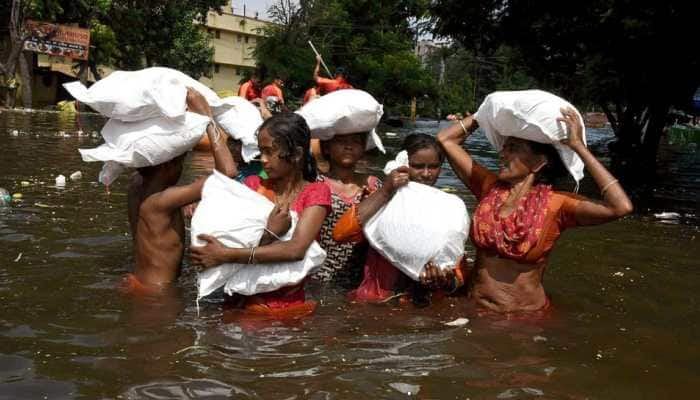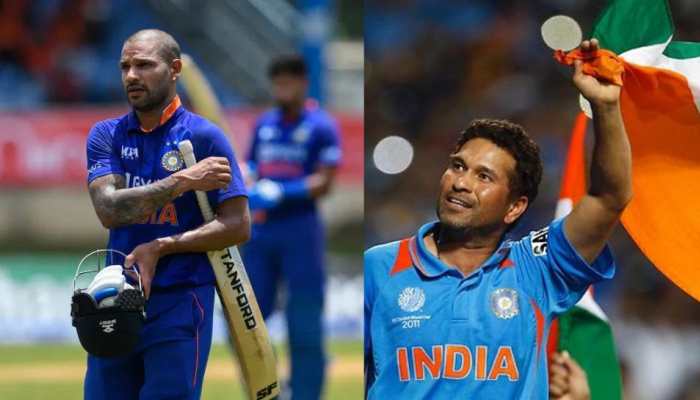Vande Bharat Express To Get 3 Versions By 2024: Chair Car, Sleeper, Metro
Vande Bharat Express is the indigenous semi-high speed trains, which are being prepped to replace Shatabdis, Rajdhanis and local trains across India.
Trending Photos
) Image for representation
Image for representation India's first indigenous semi-high speed train - the Vande Bharat Express- has received rave response from the rail passengers as well as the BJP-led government of India. Every single Vande Bharat Express is inaugurated by Prime Minister Narendra Modi himself and is now operational across 17 routes in India. Launched in 2018, the Vande Bharat Express will get three versions - Vande Chair Car, Vande Metro and Vande Sleepers - by February-March next year, confirmed Union Railways Minister Ashwini Vaishnaw. The announcement was made at the inaugural run of Dehradun-Delhi Vande Bharat Express.
These indigenous semi-high speed trains, which are being prepped to replace Shatabdis, Rajdhanis and local trains, are being made at the Integrated Coach Factory in Chennai. In an interview with PTI, the Union minister also said that in the next three to four years, Indian Railways will upgrade its tracks to support the maximum speed of 160 kmph of Vande Bharat trains.
Vande Bharat Metro
Among the three upcoming formats of the Vande Bharat Express trains, the Vande Bharat Metro is the most talked about modes of transportation. The metro trains will be a form of semi-high speed urban transportation that will be made available between cities less than 100 kilometres apart. The Vande Bharat Metro, in essence, will be a take on urban rapid transport network, like RAPIDX, India's first rapid rail transit system.
Recently, Indian Railways cleared procurement of 238 Vande Bharat Metro trains to replace existing sub-urban trains of the Mumbai Local Train network. These trains will provide wi-fi onboard and other modern features, making them the fastest and most modern way of transportation between urban centres.
Vande Bharat Express Chair Car
The next category of the trains will be the Vande Bharat Chair Car, which is essentially the same as the Vande Bharat Express, currently running in the country. These trains will be available for distance from 100-550 kilometres connecting cities between two states strategically. Currently, there are 17 Vande Bharat Express trains running in India, offering an all chair car configuration.
These trains are covering cities based 500-700 km apart, covering the journey between 6-8 hours. The Vande Bharat Chair Car train will further be expanded to multiple routes, eventually replacing the Shatabdi Express in India. "Every eighth or ninth day, a new train is coming out of the factory. Work is going to start at two more factories. We will have a new train coming out of these factories once their supply chain gets stabilised," Vaishnaw said.
Vande Bharat Express Sleeper
The Vande Bharat Express Sleeper trains will be designated for a journey beyond 550 kilometres, mostly covering overnight routes to reach important cities. These trains are expected to replace the Rajdhani Express trains and will offer sleeper berths to the passengers, for a comfortable long distance travel.
Dehradun-Delhi Vande Bharat Express
Prime Minister Narendra Modi flagged off Delhi-Dehradun Vande Bharat Express which will run between Uttarakhand's Dehradun to the Anand Vihar Terminal Railway Station in Delhi. Equipped with state-of-the-art amenities for passengers, the first such train for Uttarakhand reduces the journey time between state capital Dehradun and the national capital to four and a half hours from the six hours and 10 minutes it took the Dehradun-New Delhi Railway Station Shatabdi Express.
Vande Bharat Express 2.0
Vande Bharat trains are designed with a top speed of 160 kmph but they will run at a speed of up to 130 kmph according to track capacity. "Old tracks were designed to support speeds between 70 and 80 kmph. Around 25,000-35,000 kilometres of tracks are being upgraded to support speeds of 110 kmph, 130 kmph and 160 kmph. It will be done in the next three to four years," Vaishnaw said.
Vaishnaw said the railway is working on fencing along tracks to check cattle runover by trains. "Very unique design has been developed for fencing. The height is about five feet and it has two horizontal barriers. It has been installed on a stretch of about 250 kilometres between Mumbai and Ahmedabad, and there has been zero-cattle casualty since the time it has been installed. We are working on all the factors for high-speed trains," he said.
Stay informed on all the latest news, real-time breaking news updates, and follow all the important headlines in india news and world News on Zee News.
Live Tv







)
)
)
)
)
)
)
)
)
)
